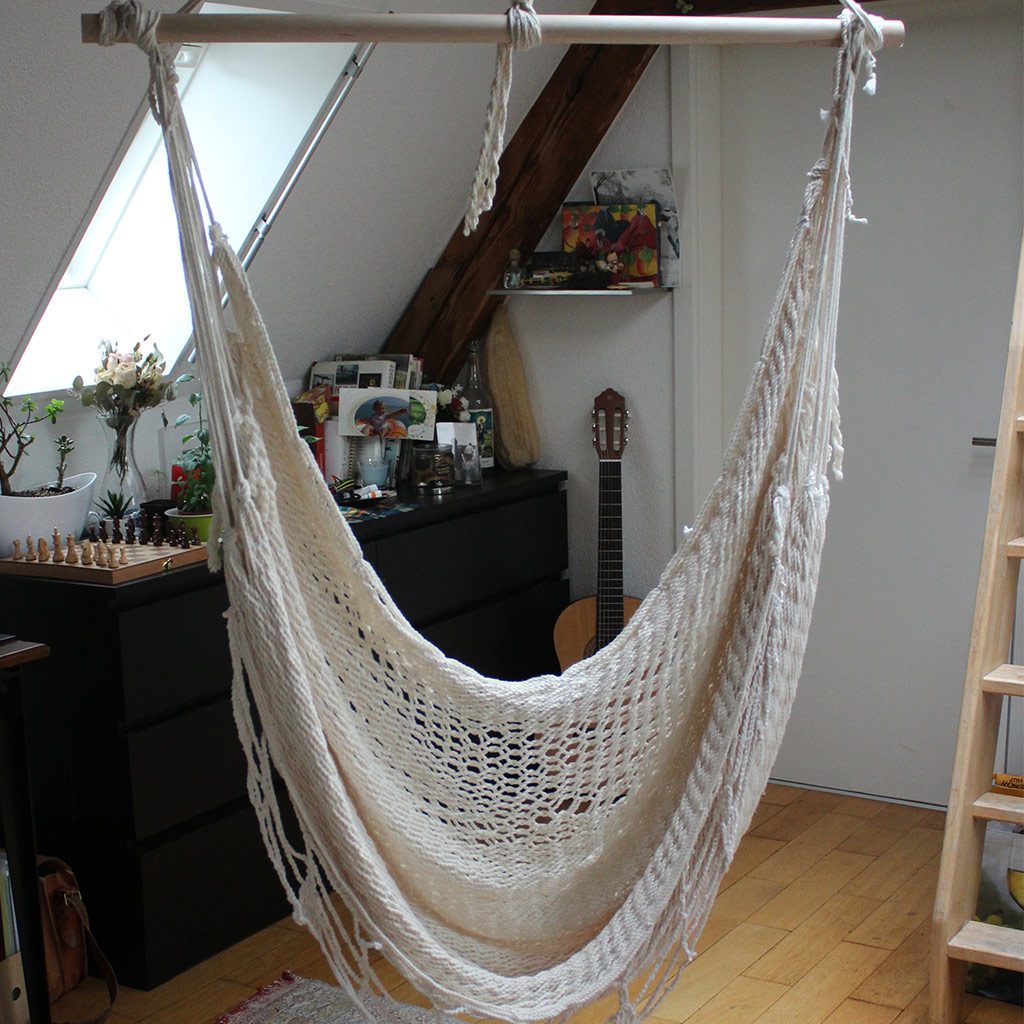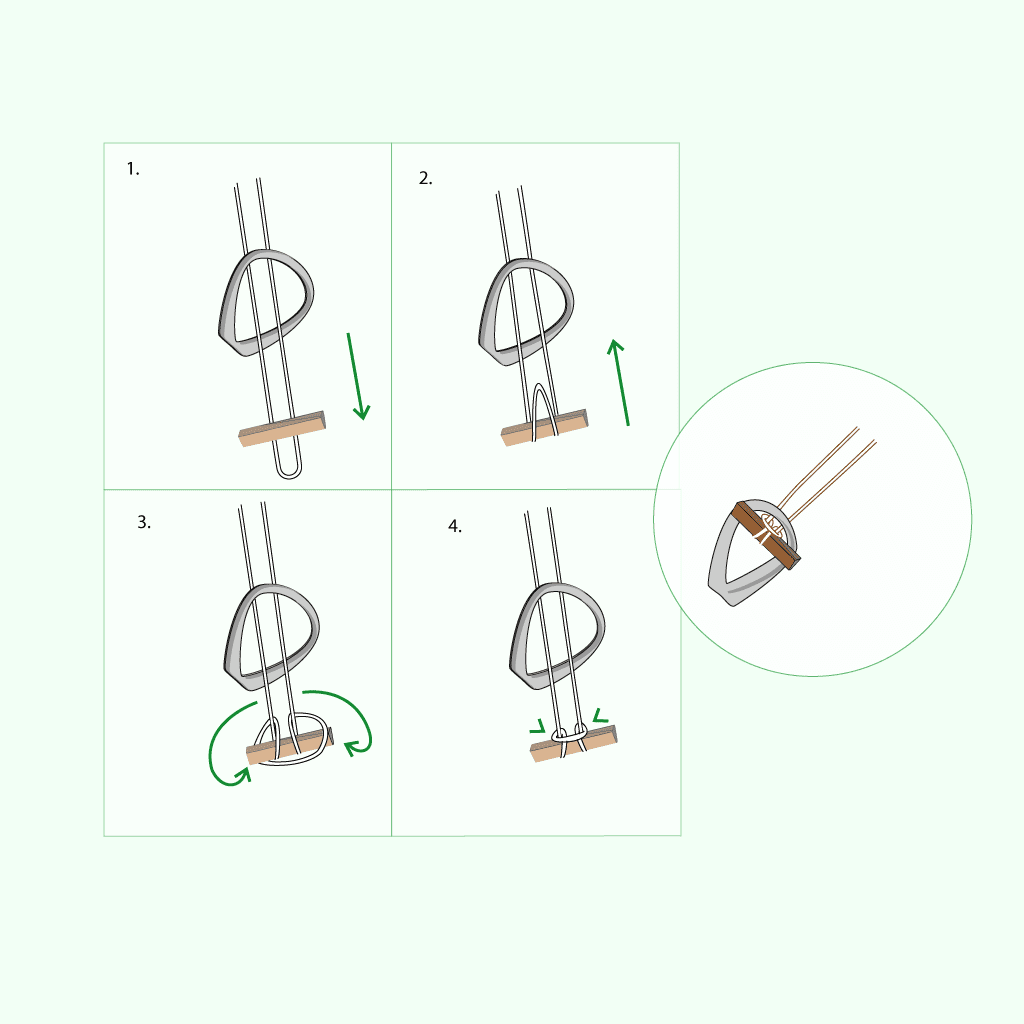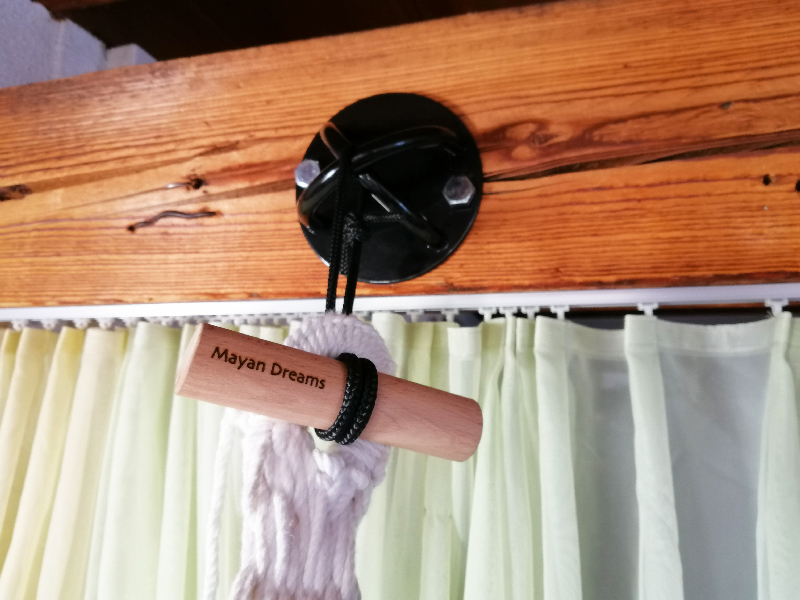This page is dedicated to practical information and exclusive tips about some of the best practices, mainly regarding how to lay in, fix, extend and take care of a (your) hammock or hanging-chair. Most of the advises and solutions we are presenting here are directly inspired by native people of Central America.

While presenting those tips and tricks, we hope to assist everyone interested in hammocks or hanging-chairs. With those tips and tricks, we’re hoping to help people realize how simple it can be to use and hang a chair or a hammock.
The ideal position(s) in a Hammock
Is it true that it’s better to lie across in a hammock? This is partially correct because of the weight distribution. While taking a position across the hammock, the person lying down in it is extending the textile or meshes in an ideal way. However, this is not a rule for all types of hammocks and, as we will see, there are few relevant exceptions. For example, in a hammock with bars, like our Dreamcatcher Hammock with bars, it is rather recommended to lay along straight in the hammock. This recommendation regarding this particular type of hammock is relevant because the way of maintaining the stability differs when bars are added. From our side, we like to say that there are no wrong or correct ways to lay down in a hammock. We are sharing this message because for us, the freedom of choosing a position is one of the main advantages of hammocks and hanging-chairs. Furniture that are not limiting you to lay in a single appropriate position. Enjoy that hammocks are stretchable to find the position that suits your needs. You can extend yourself and, if you prefer, you can also wrap yourself in it like in a cocoon. Just relax! Quality hammocks like the one from Guatemala are naturally adapting their shape to support your back ideally.
Additionally, by adjusting the knots of the fasteners on net hammocks, you can easily enhance and personalize your lying experience. If needed, you can fine-tune them one by one to optimize comfort according to your preference.
From our side, we like to say that there are no wrong or correct ways to lay down in a hammock. We are sharing this message because for us, the freedom of choosing a position is one of the main advantages of hammocks and hanging-chairs. Furniture that are not limiting you to lay in a single appropriate position. Enjoy that hammocks are stretchable to find the position that suits your needs. You can extend yourself and, if you prefer, you can also wrap yourself in it like in a cocoon. Just relax! Quality hammocks like the one from Guatemala are naturally adapting their shape to support your back ideally.
Additionally, by adjusting the knots of the fasteners on net hammocks, you can easily enhance and personalize your lying experience. If needed, you can fine-tune them one by one to optimize comfort according to your preference.
Hanging a hammock
Hammocks are “easy-to-use” and “easy-to-store” furniture for both, indoor and outdoor use. To realize how easy it can be to extend and fold back a hammock, we can simply take a look at the example of our hanging-kit inspired by the local people from Central America. In westerns countries, people are regularly hesitating or get worried; “Where to hang it?”, “… only use a few days in the year.”, “how much place to hang it?”, “Should I ask for some professional advises before to hang it to that cement roof or ceiling beam?“. For some evident security reasons, those questions are legitimate. Luckily, they are often overrated, and it is usually not that complicated to fix a hammock correctly and safely. One reason we do think different and get often worried in western countries is simply because laying in hammocks is not (yet) a cultural tradition. We’re just missing some basic knowledge and tricks from specialists!
Fixing a hammock in a house, a villa or a chalet?
Load-bearing walls and wooden ceiling beams are evident places to attach a hammock. Metallic, cement or wooden made structures, often present around terraces and pergolas, are also ideal places where to hang a hammock without having to drill holes. While looking carefully, there are often a few places where a hammock could fit. A hanging-chair can be better appropriate for a tinny space and balcony. It’s also important to consider a hammock as furniture you can store whenever you want to. If necessary, we recommend drilling holes and using steel mount fixation rather than using a hammock stand, which will take up space in your environment and won’t allow you to enjoy the hammock to the full. When correctly mounted with a proper hanging solution including hooks, wall mount fixations, ropes and fasteners, mounting or folding it should not take longer than a minute.Fixing a hammock in a loft or a flat?
While looking for a place for your hammock, don’t forget to take a look at the balcony. Balcony structures and ceilings are often ideal places for hanging a hammock. They are also perfect locations to enjoy the sun and relax. If this option is not considered in your flat, don’t give up! Hanging a hammock in your flat without causing damage is straightforward. If the reason yours are worried are the holes you have to make in the walls, keep in mind that it’s possible to cover holes with some sealant. Use load-bearing walls and drill at a 90° angle. We are offering our own solutions to fix hammocks, like the kits and hanging elements we propose in our shop. The hanging technique we are recommending, only with ropes and two pieces of wood, is inspired by habitants from Guatemala.How to fix Hammocks?
Preparing some precise marks and checking the ideal distance before drilling or mounting fixations is surely the first thing to do. Our Ropes and Woods hanging kit is a very reliable, durable and ecological way of hanging your hammock. It simplicity of use and elegance makes it a suitable solution to hang a hammock inside a home or between two trees in a garden.How much space to extend a hammock
The ideal distance may not always seem evident to define and, in fact, a few centimeters can make a sensible difference in terms of comfort. You will have to adapt it to your own preference, but it’s generally ideal to apply a moderate tension. You will not necessarily need to have a space as big as the hammock is long to hang it. Many tutorials indicate that the length should measure about twice the height: length = X – height = X/2. This method of calculation is a good way to get an idea of the place you need. However, the ideal tension is something you need to feel. If the place seems too tight, you should consider that it is possible to shorten considerably the support strings on both sides. To do so, just loose each support knots (simple knots) and bring them upper (let them slide).
This method of calculation is a good way to get an idea of the place you need. However, the ideal tension is something you need to feel. If the place seems too tight, you should consider that it is possible to shorten considerably the support strings on both sides. To do so, just loose each support knots (simple knots) and bring them upper (let them slide).
What about a hammock stand?
Enhance your relaxation experience with our Latino Relax and our Inka Relax hammock stands in Wood and Metal from “Tropical Hamac “– We are the unique reseller in Switzerland for these products of this Latin hammock brand with +35 Years of experience. Perfectly designed for hammocks, they provide excellent stability and blend seamlessly into your garden or terrace. The curved structure allows for a smooth rocking motion, ensuring absolute comfort. Compatible with all our fabric and net hammocks, it’s the ideal companion to extend your hammock’s life. It can be a great solution in some particular cases, principally when there are no satisfactory alternatives. Even though, whenever it is possible, you should avoid using hammocks stands. A stand makes it difficult to extend the mesh of any hammock properly. It will feel smaller, or even tight, in comparison with laying in the same hammock fixed between some walls or trees. Before making the choice of a static hammock stand, it is also important to consider that a hammock fixed on walls can be removed within a few seconds, while a hammock stand may take some place for a long time in your living room or on your terrace.
Fixing a hanging chair
To have a resistant rope, what can handle alone the weight of the person sitting or laying in the hanging-chair, is the evident difference compared to fixing hammocks. For the rest, it’s almost the same advice that can be given. Of course, for a hanging-chair, you will have to think vertically and also accord importance to the weight that the ceiling or tree branch above you can support. This should be a simple process and like for hammocks, you can always ask for the confirmation of a professional if you are not 100% sure of the weight the preferred support can hold.
Taking care of your hammock
CLIMATE: The first recommendation, if you are looking to keep your hammock intact for many years, is to avoid exposing it to extreme weather conditions like rain and below zero temperatures. A hammock or hanging-chair should be stored in a dry place that would not favor moisture. FIXATION: Using an appropriate round shaped fixation preserve hammocks loops. For this reason, the Ropes and Woods kit is much better than a rifleman’s buckle if you want to keep your hammock intact for many more years. STORAGE: The cotton bag we send our hammocks in is a practical in more than one aspect. A natural packaging allows you to transport and store your hammock without damaging the cotton fabric or net it’s made from. The packing material should allow your hammock to breathe. WASHING: The last advantage of a cotton bag is that it makes it easy to wash your hammock. While washing a hammock, we recommend using the delicate program of the machine or washing by hand. To avoid any fading, it’s preferable to not mix colorful hammocks with clothes.



Are there exceptions to the general advice of lying across a hammock? If so, what is one example? regard Anchor Text
Dear Windy,
Thank you for this interesting question and happy New Year!
True, this is a recommendation, but not a rule. A relevant exception concerns hammocks with wooden bars, in which we recommend to lie in the length because it’s safer and more comfortable.
Personally, I also often like to change position and often lie horizontally, while enveloping myself in the hammock. The experience can often be improved and personalized by sliding the knots of the threads connected to the loops. This way, you can adapt the tension and improve stability to create a cozy nest.
Kind Regards,
Fred. B – Mayan Dreams